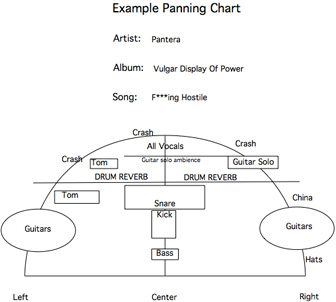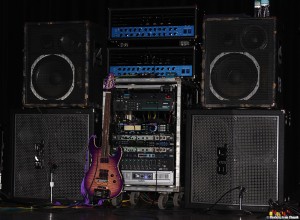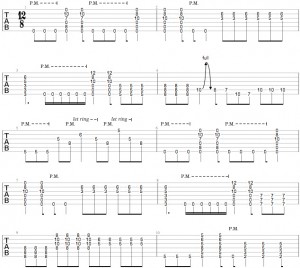Now, I know that since this is a recording column, naturally everyone wants to know what gear is good and what they should buy and who has good presets for this and that plugin… Well, there are more important matters at hand. If any of you remember from the movie Conan The Barbarian, James Earl Jones’ character Thulsa Doom says at one point, ‘What is steel, without the hand that wields it?!’ and I’ll tell you why that makes the ultimate in sense. Obviously, that’s a silly reference and an obscure one at that, but if you think about it…what sense does it make to have a ton of recording gear, if you don’t really even know what to listen for? Or, how to listen critically?
‘Gear isn’t strong boy… EARS are stronger!’
ANYWAY onto the subject at hand:
I want to first say, though, start with speakers. Headphones you’ll find react in a considerably different manner than speakers, primarily because of how relative volumes/balances translate between the two. Also, on a more petty note for you guitarists, it’s a lot less of a pain to listen through speakers while sitting in a chair with your guitar, than it is to listen with headphones and have to move that damn wire out of the way (coming from the headphones).
For additional reading on speaker placement for optimal listening, refer to Dan Thompson’s book ‘Understanding Audio.’
The key here is being able to IDENTIFY things sonically. We’re not going to be stampeding into it though – you have to start basic and hone your listening skills. To me, on the entry level, there are three characteristics of the music you listen to from a purely SONIC perspective: Panning/Imaging, Volume/Balances, and Frequency Content. NOW, I’m not saying these are the ONLY three things to use when you listen to something with a critical ear, but this could help you in the beginning.
PANNING/IMAGING:
Panning, left and right, in the middle? on the sides? over there? over here? Panning/Imaging is the lateral (side-to-side) placement of instruments/elements in a mix. It’s a means of separation, or general conveyance of emotions (because we really don’t NEED to logically explain why we do what we do in music). Generally one way to REALLY get an ear for panning is just to listen to something you really like and are familiar with (or not familiar with, sometimes that makes it more interesting), and then make a ‘panning chart’
The panning chart is where you can mark down what you’re hearing with whatever shapes or indicators you want along the boundaries of the chart itself. This is a good way to be able to visually and aurally ‘place’ where elements of the mix are sitting in the stereo spectrum. Ultimately observing the panning trends in a lot of music will give you an idea of common practice for mixing, or give you some new ideas all together. By the way…this one you CAN use headphones for if you want, it’s easier for some people that way.
To download a blank panning chart to use for practice, CLICK HERE
VOLUME/BALANCES:
Volume AND balances are most of the time the most crucial element of your mixing. Although, depending on what stuff you analyze as a critical listener, modern mastering might make it a bit difficult to discern balances, as well. BUT either way, you will be able to pick stuff out over time. For this I recommend two things: ONE is that you find a way to make whatever signal you’re listening to MONO at will (which you can do if you import whatever material you’re listening to into your recording software or a free program like Audacity). TWO is that you DEFINITELY start this out on SPEAKERS and NOT HEADPHONES. Trust me on this one.
The purpose of being able to sum your signal to mono for this (instead of stereo) is that in mono you can get insight into the overall volumes of each element of the mix WITHOUT panning factoring into it. A lot of the time during mixing people will sum to mono for a volume reference on key elements like wide left/right panned guitars versus the snare or main vocal track. Again the purpose of listening for this kind of thing is to get insight into what people commonly do, and also to get an idea for normal volume relationships between core instruments in mixes (like the relationship between drums, bass, guitar, and vocals for instance).
FREQUENCY CONTENT/FREQUENCY BALANCE:
Now, THIS definitely will be the most difficult part of you developing your critical listening skills. To understand how frequencies work in relation to listening to/working on music there are a few things you need to know:
- Frequencies are measured in a unit of ‘cycles per second’ which is also known as ‘hertz’ and displayed as ‘Hz’. Frequencies measuring at or over 1000Hz are referred to in a unit called ‘kilohertz’ and displayed as ‘kHz’.
- The normal threshold of human audibility is 20Hz up to 20kHz.
- The 20Hz to 20kHz span is in most ways very similar to a musical scale, because a pure sine wave of any frequency, will in fact be heard as a musical note. Example: 440Hz is a perfect A.
- There are numerous charts that exist which show the ranges of instruments and how that corresponds to the frequency spectrum (see THIS attached link) which will help you to further identify what you hear and how it makes you feel.
- There are also a few effective ways to quiz yourself on how well you identify frequencies either as pure waveforms, or noise (see THIS attached link and also THIS one).
It’s a pretty loaded concept, for sure. There’s a lot that I can’t really explain because it would take much more than one column. There are some excellent resources for Audio Ear Training (which is the common name for ear training in regards to frequency recognition) which I have linked to in this column, though.
AND SO….
The reason I’m making a point out of mentioning all this stuff is not so you can geek out and be like “I AM THE MASTER OF PICKING OUT PANNING…AND I CAN HEAR 2kHz BOOSTED FROM A MILE AWAY”. Music production, and mixing, is a very personal thing. Ultimately it’s these decisions that in some small part (or in most cases a very LARGE part) make people feel a certain way when they hear the music. As much of a statement people make with their music, it is just as much of a statement what people do SONICALLY with their music. By honing your ear for more critical listening-based use, you’ll gain insight into what works for you and also the emotional impact your decisions make on your music as a whole.

















